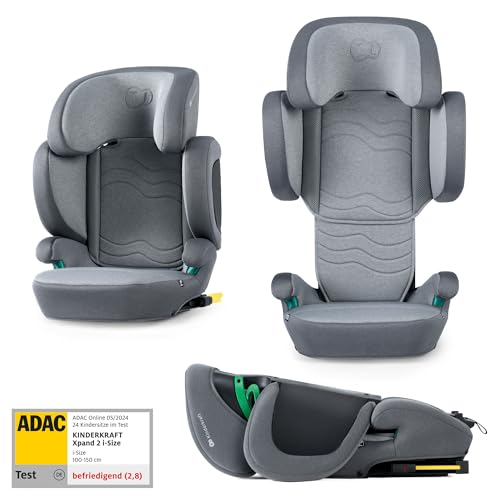Transitioning from Pram to Stroller: A Comprehensive Guide for Parents
Browsing the world of baby gear can be overwhelming for brand-new parents, especially when it comes to picking in between prams and strollers. Both serve important functions, but they are created for various requirements and stages of a kid's advancement. This short article aims to inform parents about the shift from prams to strollers, laying out the benefits and factors to consider while offering useful suggestions.
Understanding Prams and Strollers
Before diving into their distinctions, it's important to comprehend what makes up a pram and a stroller.
Prams:
A pram, short for perambulator, is usually designed for infants approximately around 6 months old. It features a flat, padded sleeping location and is mostly meant for transporting very young kids. Prams are designed for comfort and security, as newborns require to lie flat to support their spinal column and organs.
Strollers:
Strollers, or pushchairs, are developed for a little older kids who can sit up unaided. They can be found in various designs and configurations, from light-weight umbrella strollers to heavier-duty designs appropriate for rough terrains. Strollers are more flexible and easier to maneuver in congested spaces, making them a popular option for active families.
Benefits of Transitioning from Pram to Stroller
- Increased Mobility and Convenience
Strollers are usually lighter and more compact than prams, making them much easier to navigate through shops, public transport, and crowded locations. The majority of strollers can fold quickly, enabling for convenient storage. - Flexibility for Different Activities
Modern strollers typically feature several configurations and can accommodate numerous activities, consisting of running, outdoor experiences, and shopping trips. They can likewise adapt to fit children of different ages and weights. - Improved Child Comfort and Safety
Many strollers now come equipped with innovative safety functions, such as five-point harnesses and reclining seats, guaranteeing that older babies and toddlers stay comfy and safe throughout getaways. - Cost-efficient Solution
Rather than purchasing both a pram and a stroller, families can buy a high-quality stroller that meets the requirements of their growing kid, potentially conserving cash in the long run.
When to Make the Transition
The transition from a pram to a stroller normally takes place when the kid reaches around 6 to 7 months of age or when they can stay up unassisted. However, several factors can influence this shift, consisting of:
- Child's Development: If the kid reveals indications of wishing to explore their environments, it may be time to switch to a stroller.
- Family Lifestyle: Active families may require a stroller sooner to accommodate getaways and travel.
- Comfort: Observe the child's convenience level. If they seem confined in a pram or are becoming more active, it's time to consider a stroller.
Choosing the Right Stroller
Selecting the best stroller requires cautious consideration of a number of aspects:
| Factor | Description |
|---|---|
| Security Features | Look for sturdy building, effective brakes, and harness systems. |
| Weight and Foldability | Choose a lightweight stroller that is easy to fold and transport. |
| Age Appropriateness | Ensure the stroller is matched for your kid's age, weight, and height. |
| Maneuverability | Check how easily the stroller relocations and turns, particularly in congested spaces. |
| Storage Space | Think about the storage capacity underneath the stroller and the size when folded. |
| Adjustability | Look for strollers with adjustable functions, such as seat recline and manage height. |
FAQs about Transitioning from Pram to Stroller
Q: Is it required to change to a stroller?A: While it's not mandatory, changing to a stroller normally offers more adaptability and ease for both moms and dad and kid as they grow. Q: What includes need to I focus on
in a stroller?A: Prioritize safety functions, weight, foldability, and storage capacity based upon your lifestyle and activities with your kid. Pram And Pushchair Travel System : Can I utilize a stroller for newborns?A: Some strollers can accommodate infant safety seat or
have flat reclining seats, making them suitable for
newborns. Constantly examine the manufacturer's guidelines. Q: How can I guarantee my child is comfy in a stroller?A: Look for strollers with padded seats, multiple recline positions, and adjustable leg rests to accommodate your child's convenience. Q: What are the very best kinds of strollers available?A: Popular types consist of umbrella strollers, running strollers, travel system strollers, and convertible strollers, each accommodating differentneeds. Tips for a Smooth Transition Test Out Different Models: Before committing to a purchase, physically test various strollers to see which one suits both you and your child best. Include Your Child:
If they are old enough, enable your
child to attempt out different strollers to see which they discover most comfy. Read Reviews: Consider looking at online reviews and recommendations from other parents to much better inform your choice
. Prepare for Storage and Transport: Factor in how the stroller will suit your automobile or home storage space to avoid future inconveniences.
- Evaluate Your Activities: Think about where and how you prepare to utilize the stroller-- city locations might need a different type compared to rural or off-road settings.
- Transitioning from a pram to a stroller is an essential turning point in a kid's life and a substantial choice for moms and dads. By comprehending the differences and
advantages of each, parents can make informed options that will support their family's lifestyle and their child's development. Equipped with the ideal details, parents can with confidence browse this transition and
ensure that their child is safe, comfy, and all set for all the experiences ahead.

